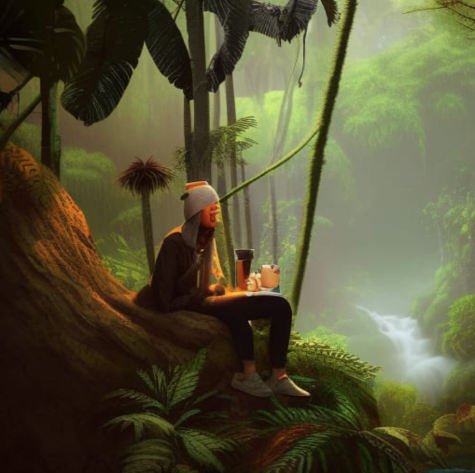There’s nothing intelligent about AI art
The age of the artist is dead, another victim of advancements in artificial intelligence (AI). AI-generated images are just another step in the long march of humanity’s self destruction, and we shall soon all be thralls to our computers. Or are they? There has been much discussion about the development of artificial intelligence, which often raises some uncomfortable ethical and logistical questions. For example, with the development of AI-generated images, many have considered the potential damaging effects on human artists, the legal ramifications of their use and whether they should be counted as artistic creations at all.
First, we should understand how AI-generated images actually work. To put it simply, AI image generators work by scanning large amounts of photos, paintings or 3D models in large chunks called data sets. The AI tool then begins to learn about these objects, specifically their features like shape, color, texture, and size. After the AI has scanned a sufficient amount of data, it will be able to create entirely new images within a specific set of parameters based on its gathered knowledge. For example, one could type “hipster drinking coffee in the jungle,” and the image generator would rapidly spit out an image of a beanie-clad figure sipping coffee out of a thermos surrounded by trees.
Though this technology brings existential horror upon my soul, I am not an artist. Therefore, I should not personally fear the development of this technology. However, should artists begin to fear for their futures? AI art is far, very far, from perfect. The tools often struggle to create realistic faces, hands, text or fine details in the backgrounds of images. However, AI art does serve a very practical purpose, especially in regards to business. AI art is free, fast and effective at creating rough sketches, mockups or ideas. It is certainly realistic to assume businesses will begin to phase out real artists in exchange for AI in regards to artistic needs. For example, why would an architecture company need to hire a team of expensive architects to design a building when they can get an AI design instead? Sure, one or two actual people will be needed to clean up the design and create a finalized product, but a large amount of the creative process can be cut down. These are the jobs at risk: people who are tasked with creating original artistic ideas. AI can create hundreds of sketches for buildings, paintings, sneakers, jewelry and practically anything else you could imagine.

With AI’s introduction into the business world comes complicated questions regarding its legality, specifically in regards to copyright and trademarks for AI generated products.
On March 16, The United States CopyRight Office released an official statement addressing the legal standing of AI art. Effective Mar 16, any work that does not have “human authorship” can not be copyrighted or trademarked. The decision essentially means a person must actually directly contribute or modify a work in order for it to be considered copyrightable material. This decision is a big win for the anti-AI Luddites like myself, but many questions remain unanswered. However, I predict many of these decisions will be settled down the road in court.
Legality aside, ethical and philosophical questions still remain unanswered. Chiefly, is AI art really art? No, it’s not. Now, I am not going to try to define what “art” really is. Humans have spent thousands of years discussing and debating what art and aesthetics really are, and what constitutes good “art.” However, in every discussion before the invention of AI some things have remained consistent. Art has always been some expression of humanity itself, and humanity’s capacity for creation. Any painting, song, movie or book is the result of some creative human effort, which is what makes art entirely unique to humanity. Art is, without doubt, a fundamentally human endeavor.
Let’s compare this to AI “art.” AI “art” is simply a computer taking information from potentially hundreds of thousands of photos (created by actual people), and trying to create an image accurate to a predetermined prompt. Usually, the resulting amalgamation results in something sort of akin to the prompt, but it can take dozens of attempts and tweaks to get what you’re looking for. AI image generators try to industrialize the creative process, which is why many AI-generated images feel so soulless or off-putting.
Fundamentally, art is an expression of the human spirit and imagination, and AI generated images are a computer’s attempt to create the most accurate portrayal of a predetermined prompt. Art is done out of passion and creativity, and the AI “art” is done out of cold soulless efficiency.